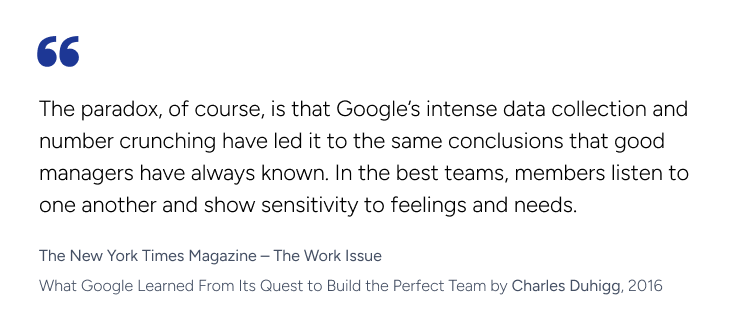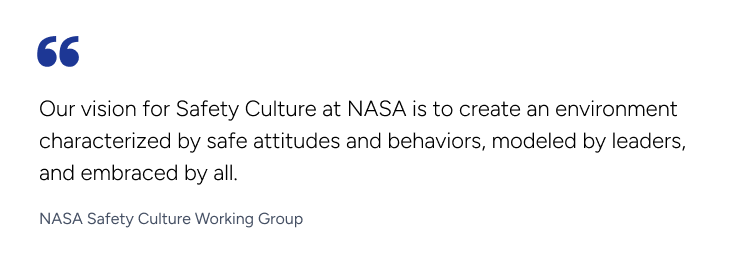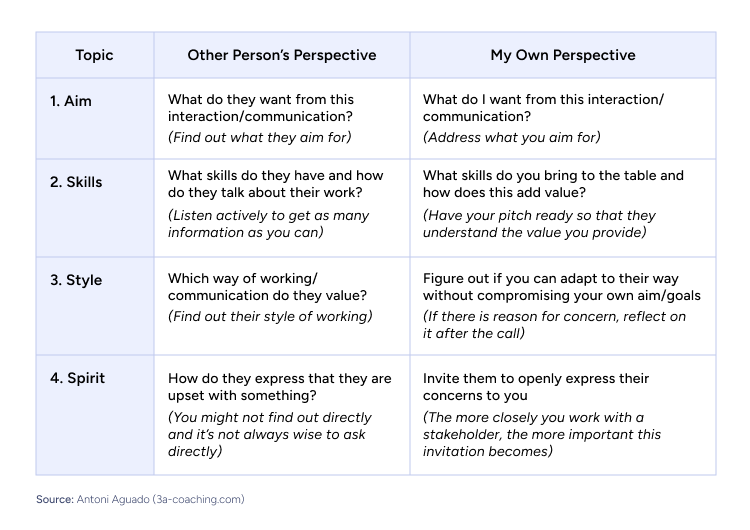What is Psychological Safety in the Workplace?



Psychological safety in the workplace is a critical factor in fostering high-performing teams and driving organizational success. This concept, introduced by Harvard Business School professor Amy Edmondson at the turn of the millennium, refers to the shared belief that team members can take interpersonal risks without fear of negative consequences.
When team members feel psychologically safe, they are more likely to speak up, share ideas, ask questions, and admit mistakes, leading to improved collaboration, innovation, and overall team performance.
The contribution of Google’s Project Aristotle
Google’s Project Aristotle, conducted from 2012 to 2014, yielded significant insights into what makes teams effective. The research team came up with four key factors that contribute to team success:
- Timely Quality Output: Team members must be able to complete high-quality work on time.
- Clear Goals, Roles, and Expectations: Every team needs well-defined objectives and responsibilities.
- Personal Significance: The work should hold personal meaning for each team member.
- Impact and Purpose: Team members must believe that their work matters and can create change.
While these four factors were essential to understanding high performance in the workplace, some questions were still open:
- How important was individual talent for team performance?
- Was it better to encourage discussions until everyone felt they had said everything they wanted to or was it better to encourage leaders to end debates when they felt the need to do so?
- Was there an optimal degree of conflict or did it matter less how leaders dealt with opposing opinions?
Surprisingly, the study found that team composition and individual talents were less important than how team members interacted and treated each other. The presence of strong group norms, particularly those that fostered a safe work environment, proved to be more critical for team effectiveness than the specific individuals on the team.
This research has had a lasting impact on how organizations approach team building and management, shifting focus from individual performance to team dynamics and creating environments where all members feel valued and heard. The concept of psychological safety soon became the number one key factor and foundation for creating team success.

The Three Key Elements of Psychological Safety
Psychological safety in the workplace creates an environment where individuals feel secure and comfortable expressing their thoughts, ideas, and concerns without fear of punishment or humiliation.
This sense of security fosters trust, respect, and open communication within teams, allowing members to be their authentic selves and contribute fully to the team's objectives.
- Trust: Team members must trust that their ideas and contributions will be respected and considered.
- Respect: All team members should be treated with appreciation for their perspectives.
- Open Communication: Honest and transparent dialogue should be encouraged, ensuring everyone feels heard and understood.
Examples of Psychological Safety in the Workplace
To better understand how psychological safety manifests in the workplace, let's explore some real-world examples that all relate to the idea of psychological safety.
1. Google's "20% Time" Policy
Google’s famous "20% time" policy was made popular in 2004, the year of Google’s IPO. This initiative encourages employees to spend one-fifth of their work week exploring projects outside their normal roles. By providing this freedom, Google aims to create an environment where:
- Employees feel safe to experiment and take risks
- Innovation is actively encouraged
- Learning and growth are prioritized
The results of this policy have been remarkable, with one of Google’s flagship products – the e-mail service Gmail – originating as a side project during this exploratory 20% time.

2. NASA's Safety Culture Program
Following the Columbia space shuttle disaster in 2003, NASA recognized the critical importance of psychological safety in the workplace. First, they discovered that an engineer had concerns about the mission but didn’t feel safe speaking up. In response, NASA implemented their Safety Culture program, which aimed to:
- Provide a safe space for anyone to raise safety concerns without fear of repercussions
- Encourage open communication about potential risks
- Demonstrate that every voice matters, especially when lives are at stake
This cultural shift has helped NASA foster an environment where safety is paramount, and employees feel more empowered to speak up about potential issues than before.

3. Buffer's first 45 days for new employees
Buffer, a social media management company, took a step to enhance psychological safety in their workplace by eliminating their 45-day bootcamps for new hires.
While new hires could still be let go during their first 45 days, a few things changed:
- New team members were immediately eligible for healthcare benefits from day one (instead of day 46).
- They were eligible to join retreats from day one.
- The “graduation” period at the end of the 45 days was eliminated.
This decision:
- Signaled more trust in new employees from day one.
- Was designed to reduce anxiety and pressure during the onboarding process.
- Encouraged new hires to speak up and contribute ideas without fear of jeopardizing their position.
Through these actions, Buffer aimed to create an environment where new team members felt valued and secure from the start.

Psychological safety in consulting projects
One question I often get is how to turn the concept of psychological safety into specific actions during a project. The answer is: The process always looks the same.
About half of the results can be credited to an inner mindset that is set for true collaboration. The other 50% are skills and tools that can be learned and applied directly.
During a one-year consulting project for a Consultport client - an international MedTech company - I was asked to step into the role of a Strategic Buyer for Research & Development. This role required a large degree of what’s called stakeholder management as many different teams and people were involved in various R&D activities. For a global, leading-edge medical device manufacturer, R&D has to deal with a lot of critical know-how and high-priority supplier relationships and projects.
The challenge: How to create true collaboration
The main challenge was to build great relationships with several different stakeholders within the R&D organization. These relationships were crucial to ensure that corporate standards related to procurement and finance (from contract design and signing to risk management) were in place.
The solution: Psychological safety first
Building psychological safety in the workplace has the same foundation as in private life. It all starts with trust, respect, and open communication.
Step 1: Build trust
In any project setting that involves human interactions, the trust-building process needs to follow a simple rule: Face2face meetings > Video Calls > E-Mails

I still see e-mails being used as a primary tool for communication in most businesses across different industries. On the one hand, this behavior is understandable as e-mails or text messages are a fast and low-effort way to communicate.
On the other hand, e-mails are not particularly useful in the trust-building process. E-mails eliminate tone of voice and other essential elements of trust-building, such as non-verbal communication. This leaves more room for interpretation errors - thus I do my very best to minimize their use.
Instead, my calendar was soon filled with a lot of (short) video calls and personal 1:1s with many people across the various R&D teams.
Step 2: Establish open communication with respect
As a second step in the trust-building process, each call needed to follow a few key principles that can be summed up with respect and open communication.
With respect and open communication, it becomes easy to figure out what your stakeholders want (goals), what they are good at (skills), how they typically behave (style), and what positively and negatively affects their behavior (spirit). Regardless of the challenge at hand, knowing about your stakeholders’ goals, skills, styles and spirit is often a game changer in creating the right atmosphere to get things done.

The outcome
Thanks to the ongoing use of communication touch points and channels and through trust, respect, and open communication, it became easier and easier to align on everything that was relevant and needed attention. Consequently, the R&D teams started to proactively approach strategic procurement earlier in the (product) development process.
This allowed for better collaboration as there was more time to prepare frame contracts and negotiate contract details with the client’s R&D suppliers and strategic partners.
Challenges to Psychological Safety in the Workplace
While the benefits of psychological safety in the workplace are clear and most people agree that it is very beneficial to both the individuals and the company, implementing it in practice can face four main challenges:
1. Addressing Power Dynamics
Power imbalances within teams can hinder the development of psychological safety. This is often the case if a team leader or manager has trouble related to style and spirit. A typical example of this is if the leader uses micro-management tactics to control his or her team. Another example is leaders who apply maximum pressure on teams to maximize outcomes.
If a company wants to harvest the benefits of psychological safety, it needs to address these issues and invest in the development of its leadership teams. I also recommend that organizations share success stories from teams that have embraced psychological safety.
2. Balancing Psychological Safety with Accountability
While psychological safety encourages risk-taking and open communication, it's important to maintain accountability for performance and results. A common critique I hear when talking about psychological safety is that in business it’s a “nice to have”, but not as important as getting results.
This type of thinking indicates a lack of understanding: teams get far better results in psychologically safe environments than they do in workplaces that lack psychological safety. It is thus in a company’s economic self-interest to promote teams that have implemented an atmosphere in which everyone feels comfortable to speak up.
3. Overcoming Existing Cultural Norms
In the same way as certain group norms (trust, respect, open communication) foster psychological safety, other group norms (e.g. fear, punishment, extreme pressure) reduce it. For organizations with hierarchical or competitive cultures, shifting towards a psychologically safe environment may require significant changes.
In some corporate cultures, psychological safety or similar ideas are often understood as the request to be nice to each other at the expense of honest feedback. That is not what psychological safety is about. In some organizations, talking about emotions or personal challenges is considered a sign of weakness or unprofessionalism. This norm is also counterproductive to creating psychologically safe environments.
Companies need to address these norms if they want to implement a better way of working. Using qualified external consultants can be a smart way to approach this change. Interim managers from outside the organization usually bring in new perspectives and are able to challenge existing norms and lead the change. For people who have been in an organization for a long time, it can become more and more difficult to challenge the status quo.
4. Getting overwhelmed by emotions
Another strong force that can prevent teams from shifting into psychologically safe environments is that leaders and team members are not able to effectively regulate their own emotional states. It is one thing to cognitively understand the importance of trust, respect, and open communication, it’s another to apply them in pressure situations and when things get heated. An ignorant comment, a verbal attack or simply avoiding engaging in a much-needed conversation can destroy weeks of trust-building in a matter of seconds.
To effectively regulate emotions becomes the key skill to avoid messing up the trust-building process. While there are many ways to improve one’s “emotion fitness”, one effective strategy is to simply learn to not react directly out of a strong emotion (e.g. anger, frustration, etc.) and instead to learn to pause for just a few seconds and regain cognitive focus. Learning skills related to emotional regulation will be a boost to anybody who wants to lead high-performing teams based on psychological safety.
The Key to Strong Client Relationships and Team Success
Psychological safety is a critical factor in driving team performance and organizational success. By creating an environment where team members feel safe to take interpersonal risks, express their ideas, and learn from mistakes, organizations can unlock the full potential of their teams.
Several real-world examples demonstrate how psychological safety can be implemented in various contexts, leading to increased innovation, improved safety practices, and enhanced trust within teams.
By sharing an example of my own work with Consultport on a one-year consulting project, I demonstrated how psychological safety in the workplace helps to win the relationship element in business and how this leads to better collaboration. By implementing practical strategies, consultants, interim managers and leaders in organizations can foster an environment where all team members feel valued, heard, and empowered to contribute their best work.
As organizations continue to recognize the importance of psychological safety, we can expect to see an increased focus on leadership development and the development of new tools to measure and enhance psychological safety in various work settings. By prioritizing psychological safety, organizations can create a culture of trust, respect, and open communication that not only enhances team performance but also contributes to employee well-being and job satisfaction.
In an era where artificial intelligence (AI) will have a huge impact on how we work together in teams, adaptability and innovation are key to success. Psychological safety will continue to provide the foundation for teams to thrive and organizations to excel.
on a weekly basis.


